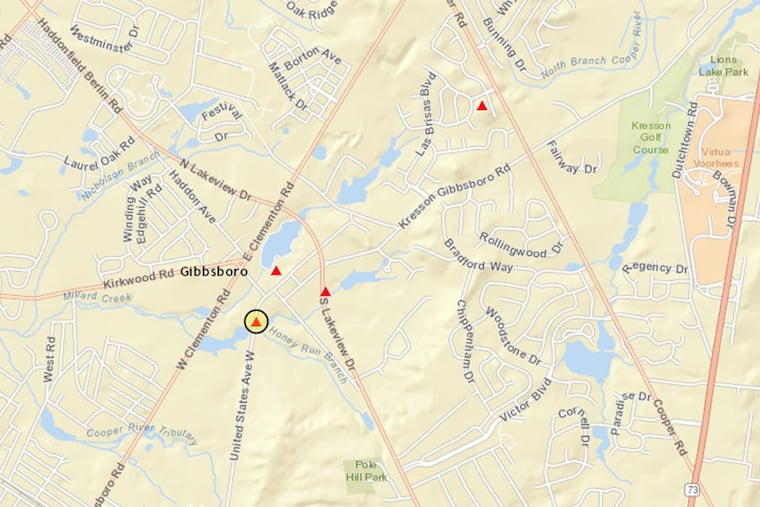New Jersey sues Sherwin-Williams over Superfund site contaminated with lead, arsenic
The New Jersey Attorney General has sued the Sherwin-Williams paint company over a highly-toxic Superfund site it owns in Gibbsboro, Camden County, saying the company had a history of not only failing to disclose all the contamination and thwarting its containment and removal, but also misleading au

New Jersey has sued Sherwin-Williams over a long-standing, highly toxic Superfund site it owns in Camden County, saying that in the past the paint company not only failed to disclose all the contamination and thwarting its containment and removal, but also misled authorities over the extent of the pollution.
The state’s attorney general, Gurbir Grewal, filed the Natural Resource Damage civil suit last week on behalf of the Department of Environmental Protection, saying that New Jersey should be compensated for “decades of lost natural resources caused by Sherwin-Williams” at the site in Gibbsboro.
“Too many companies have treated the public’s natural resources like private dumping grounds, despite the health risks to our residents and the harms to our environment,” Grewal said.
An EPA supervised cleanup is underway at the site. But state officials say the cleanup prepares the site to meet only human health standards. It does not, they say, “address restoration of the natural resources to their pre-contamination state, and does not provide compensation for the time period that the natural resources were damaged.”
The state did not specify the cost of repairing the damage.
Sherwin-Williams issued a statement in response to the suit, saying, the company, “has a long-standing commitment to protecting the environment and has been working closely with and under the guidance and direction of both the U.S. Environmental Protection Agency and the New Jersey Department of Environmental Protection.”
Sherwin-Williams issued a statement, through a spokeswoman, in response to the suit, saying, the company, “has a long-standing commitment to protecting the environment and has been working closely with and under the guidance and direction of both the U.S. Environmental Protection Agency and the New Jersey Department of Environmental Protection.”
The spokeswoman, Julie S. Young, said Sherwin-Williams has spent years investigating the site, and “we are actively remediating many areas of the site.”
The Sherwin-Williams Superfund complex is comprised of three separate sites, totaling about 75 acres, contaminated by more than 100 years of paint, varnish, and lacquer manufacturing.
Nine residents or former residents, some of whom have children with cancer, filed suit against the company in 2017. One family involved in the suit has a daughter diagnosed with leukemia and another has a daughter diagnosed with neuroblastoma, a cancer that begins in nerve tissue, most commonly in the adrenal glands.
A U.S. District Court judge in Camden dismissed the suit in August 2018, essentially finding that the case was too sweeping and that individuals involved could not show direct ties between contamination and health issues.
The property and surrounding groundwater and waterways were contaminated long before Sherwin-Williams took over. John Lucas & Co. also made paint from the mid-1800s until 1977, when Sherwin-Williams began operations, according to court and EPA documents. Lead was banned as a component of paint in 1978.
The property contains the defunct manufacturing facility as well as lagoons that held wastewater and paint sludge, tank farms, drum storage areas, and a rail line. For decades, the manufacturers discharged tainted materials to Hilliards Creek.
Hilliards Creek is contaminated with lead and arsenic and flows for a mile before discharging into Kirkwood Lake in neighboring Voorhees. The Cooper River is just downstream and eventually empties into the Delaware River. Sediments in both Hilliards Creek and Kirkwood are contaminated with lead and arsenic.
The complex, known as the Sherwin-Williams/Hilliards Creek Superfund Site, includes the manufacturing plant, the Route 561 Dump Site, and the United States Avenue Burn Site.
Paints and other materials were burned during numerous fires at the complex in the 1930s and ’40s. The site was so volatile that highly flammable materials would ignite in the hot summer sun. In a 1949 fire, 1,000 large drums filled with toxic materials exploded.
The EPA began putting parts of the site on the National Priorities List in 1999.
The lengthy state suit claims that, starting in the 1970s, Sherwin-Williams discharged and disposed of “substantial amounts of hazardous substances over decades” on the properties. Further, the suit says, the company failed to disclose or notify the DEP of all of the contamination, ignored orders to address it, repeatedly issued misleading statements in documents, downplayed its responsibility, and made negotiations for cleanup “complicated and difficult.”
As a result, New Jersey is seeking unspecified costs and damages “for injuries to natural resources” including groundwater, local waterways, wetlands, soil, and air.